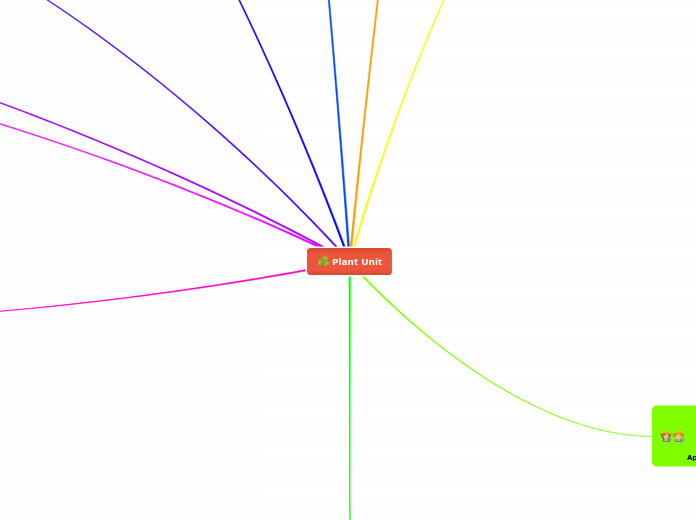von Ernie Fosu Vor 4 Jahren
368
Assignment #5 - Plants
A summary of the biology plant unit in grade 11

von Ernie Fosu Vor 4 Jahren
368

Mehr dazu
Flowers
Fruits
Thigmotropism
The response will continue resulting in a “winding” effect
The side of a plant in contact with a surface of a stimulus will produce auxins on the non-contact side, producing growth
Thigmotropism is the growth of a plant in response to contact
Gravitropism
Plant’s response will be to return to the upward position
The stem demonstrates negative response by growing against gravity
The roots demonstrate positive response by growing towards gravitational pull
Gravitropism is a plants natural growth response to the effects of gravity
Phototropism
Less auxins produced on the side of the plant towards the light
Phototropism is a growth response of a stem towards light, so that it can receive the maximum amount of light for photosynthesis
When preyed on it will releases emergency signal that predators will take care of
Tobacco plant uses nicotine poisons to induce seizures, paralysis, adn morality
Knows which plant it likes more
Obligate Parasites lives off host
Producing it's own food
Types
Clasping root
Fibrous root
Tap-root
Plant roots slow down when passing nutrients for efficiency
Plant roots accelerate growth to travel to patches of nutrients
Growth towards the sun
Function: To firmly anchor the plant to the ground and to absorb water and dissolved mineral salt from underground.
ethylene gas causes all other to ripen
released ethylene gas
one spoiled
Gibberellins
cytokinins
Auxins
some plants do not obtain enough nutrients from the soil and consume insects such as the Venus fly trap and the pitcher plant
competition for sunlight results in some plants called epiphytes that grow on trees with trailing roots such as orchids, some mosses and ferns
great competition for pollinators by use of complex flower structures and scents
Waxy skin to reduce water loss
Spines prevent predators from getting to the water
Have accordion pleats to allow the plant to expand
Catci are capable to storing large quantities of water e.g. 6 m tall cactus can store 400 L of water
Long shallow root systems
faster lifecycle to take advantage of the limited sunlight
built in antifreeze to withstand the cold
Roots are shorter and the plants are shorter
mosses, lichens, trees and shrubs live here
Most abundant plant form on Earth
Best adapted to the various climates on Earth
Play a large role in feeding people
Fruits are designed to disperse seeds
Plants bear fruits
Often called flowering plants (but not all of them are flowering plants)
Wide spread root systems (anchor themselves and helps to get nutrients)
Tend to be found in harsh environments, found worldwide
Generally trees
Requires pollen to produce
Do not produce seeds or fruit
Most are cone bearing
Most have long, thin needles (these are their leaves)
Seedless plants do not have seeds and are spread by windblown spores. They tend to live in moist areas and examples include ferns and horsetails.
Seeded plants contain an embryo surrounded by a seed coat. Inside the seed is nutrients that help feed it as it grows.
No system of vessels to transport water and nutrients (xylem and phloem) No true leaves, roots or stems Depend on diffusion, osmosis and active transport to get nutrients Need to grow close to water (for reproduction and growth) Grow close to the surface and when they die they leave soil for plants to grow
A vascular plant has specialized tissue that helps to transport water and nutrients Most plants are vascular to transport water and nutrients(xylem and phloem) Have roots, leaves and stems ability to live away from major water sources e.g. ponds, lakes Ex. Flowers, trees, shrubs and grasses